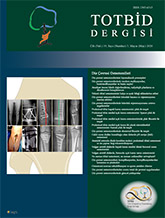
Joint-preserving distal femoral osteotomies (DFO) and proximal tibial osteotomies (HTO) are frequently used to correct the mechanics of the knee in deformities resulting from distal femur and proximal tibia, which constitute the knee joint. In these patients, the center of the deformity is usually located in the knee joint or close to it. Following deformity analysis, the hinges are placed at the point determined as CORA. After osteotomy, the targeted correction of the deformity can be gradually achieved postoperatively with the use of external fixators and the mechanical axis can be reconstituted. In patients who have undergone osteotomy, pain decreases in the short term and functional activities improve while in the long term due to the decrease in loads effect on the unit cartilage surfaces in the joint space, a long survival time is achieved and conversion to total knee arthroplasty can be postponed for an average of 10 years. After this period, conversion to total knee arthroplasty can be safely done with low complication rates.